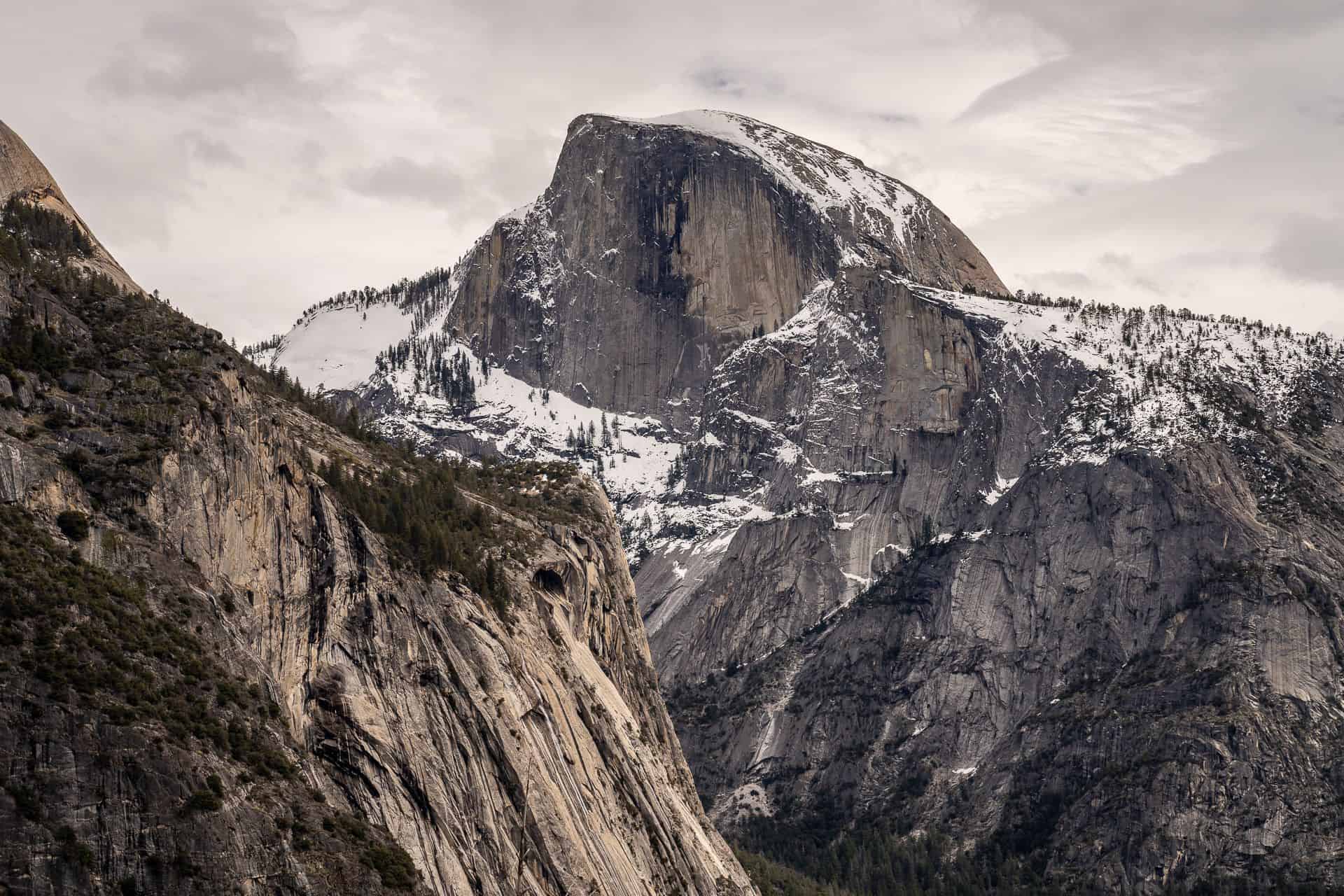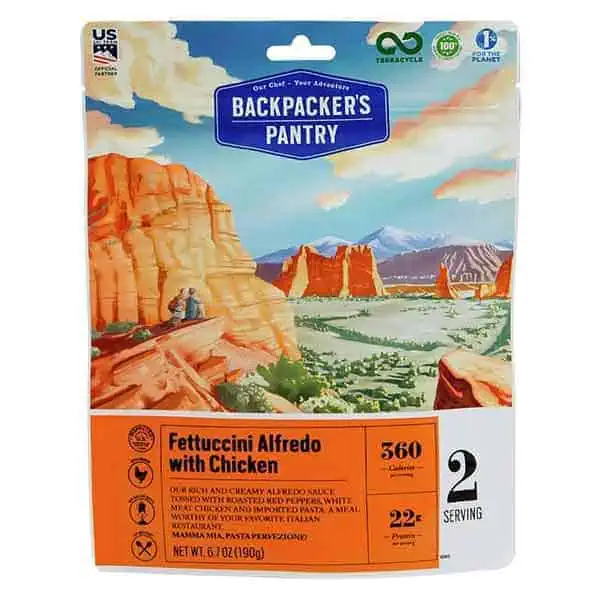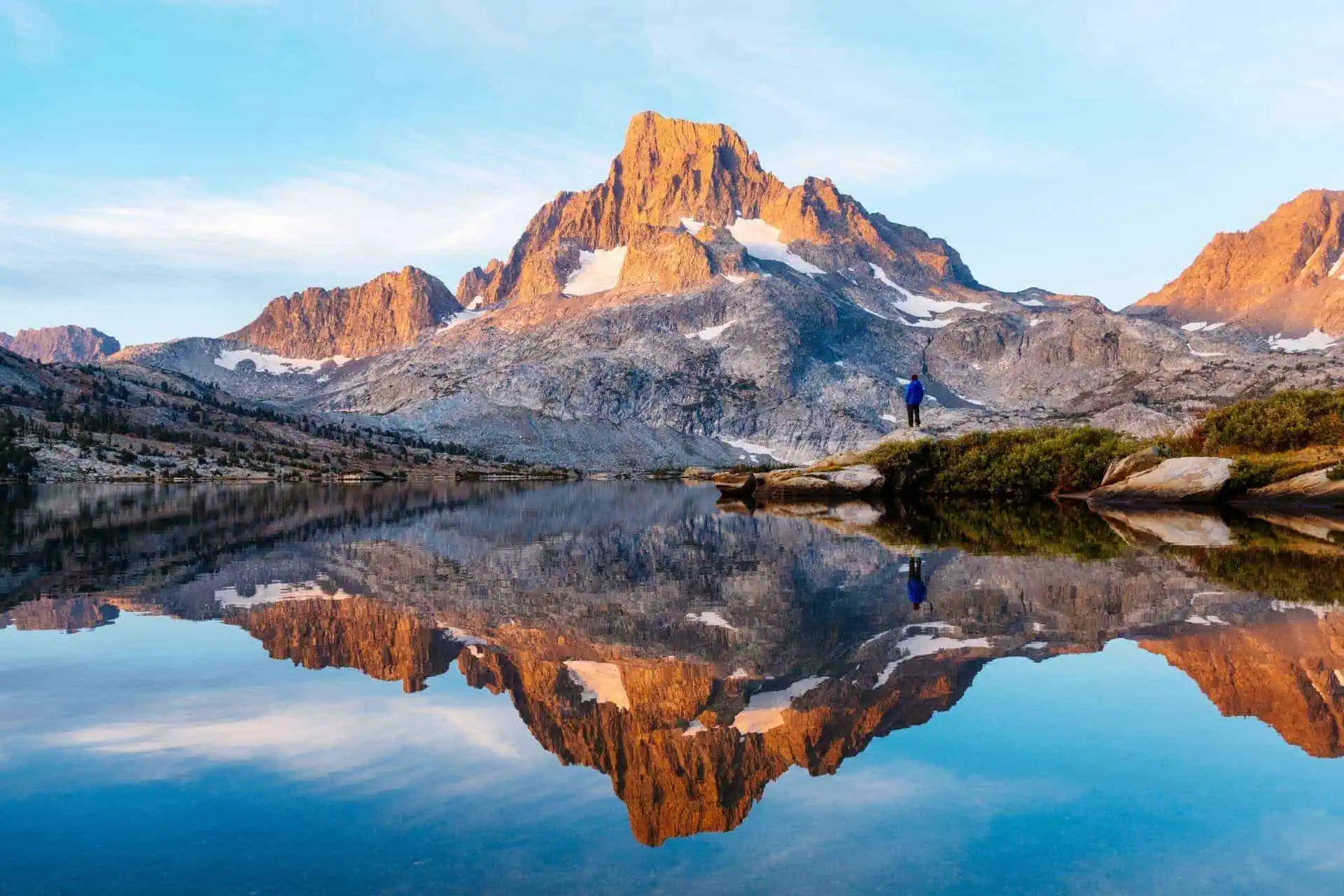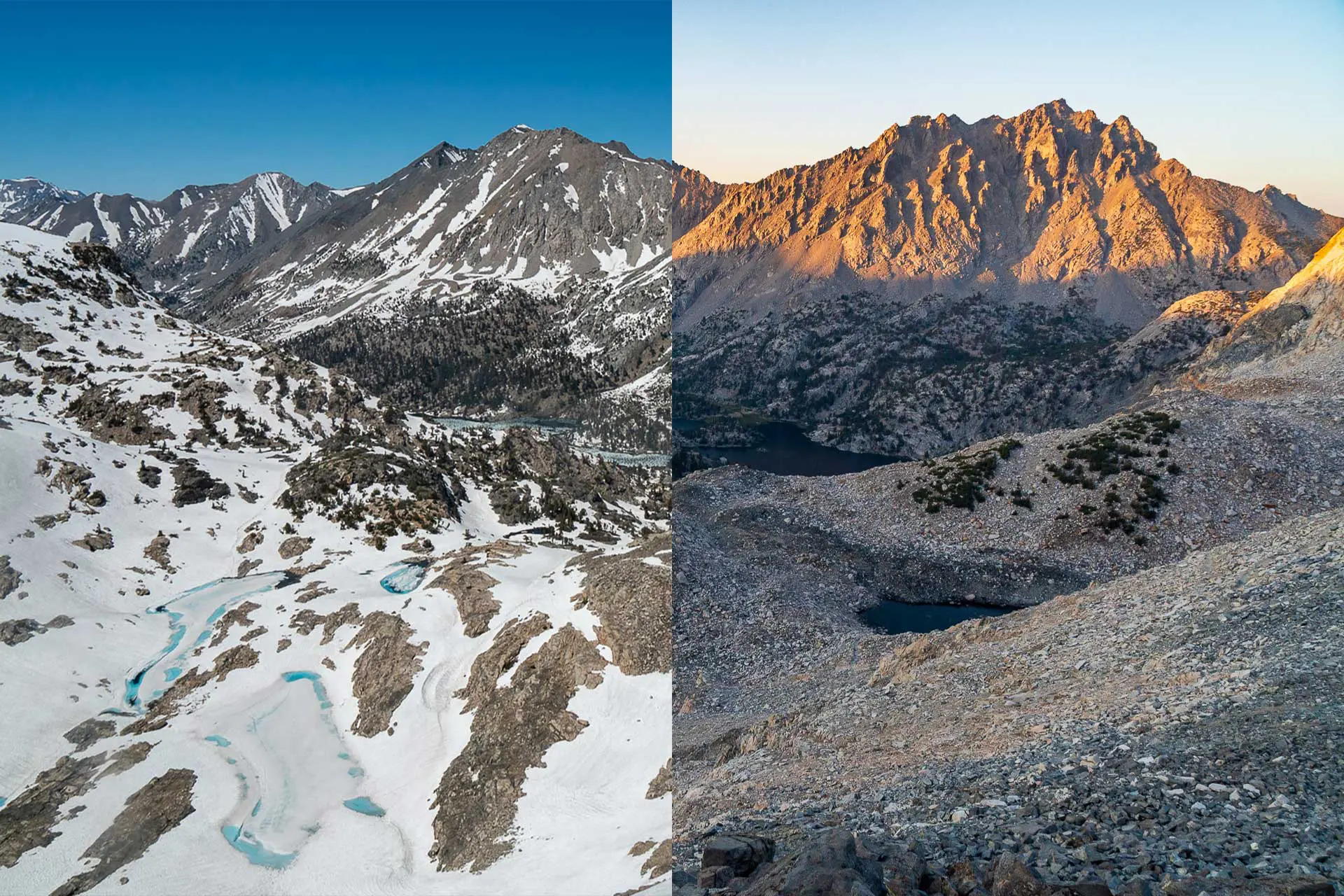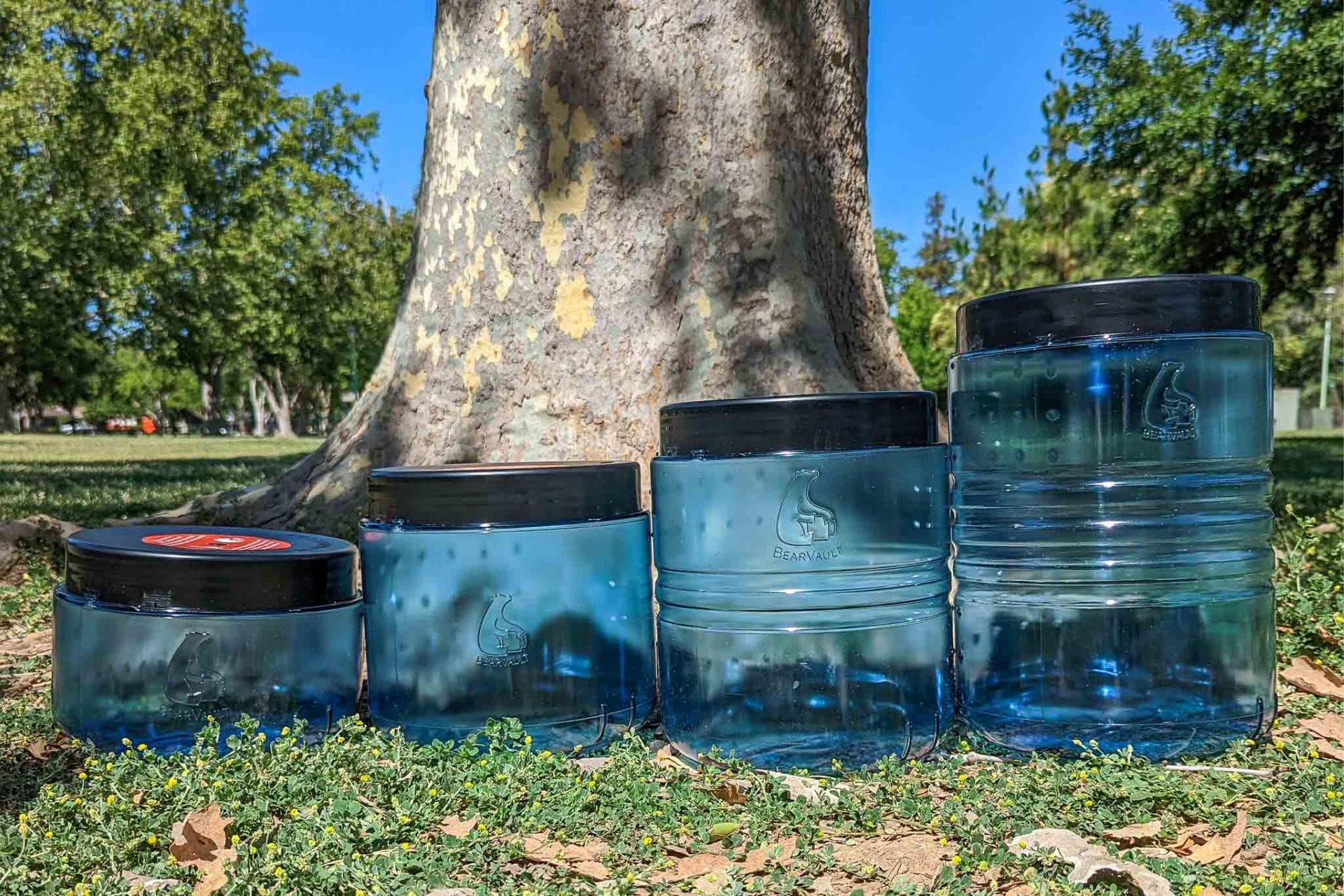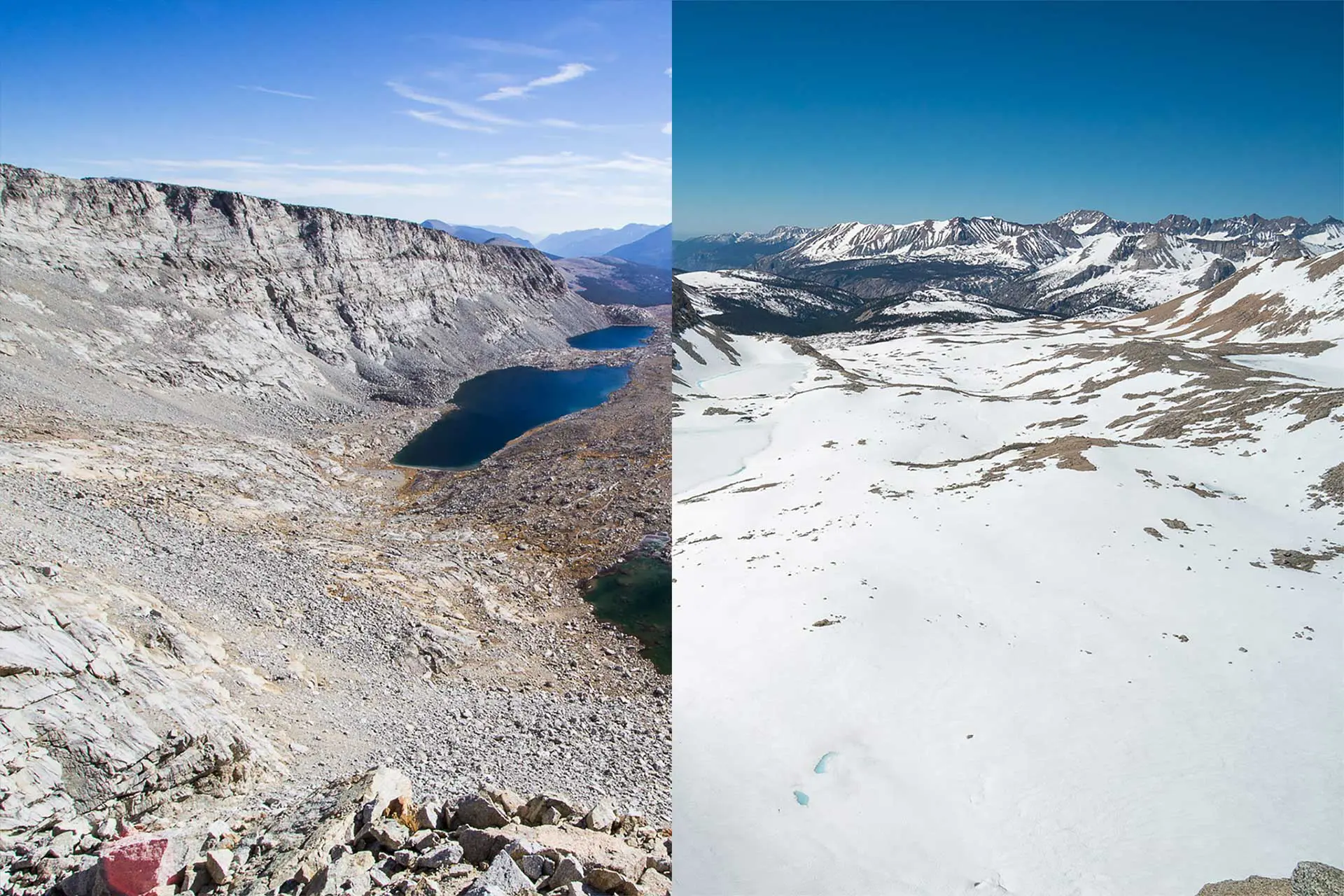John Muir Trail Resupply Guide (2023 Survey)
The third installment of the John Muir Trail Thru-Hiker Survey covers the JMT’s biggest (perceived) logistical issue: resupply. After hikers get their gear sorted, questions surrounding resupply become the object of JMT hiker fascination and internet probing.
What is JMT resupply? It’s the replenishment of the food (and other consumable items) carried in a hiker’s backpack. Basically, buying more food and supplies on the trail. Can you bring all your food for the entire JMT with you from the start? Sure. However, most people will opt to resupply at some point because the alternative means either moving quickly or carrying an extremely overpacked bear canister.
I often advise hikers to avoid resupplying before beginning a thru-hike. Still, the John Muir Trail isn’t an incredibly long hike compared to something like the 2,600-mi / 4,200-km Pacific Crest Trail, so planning resupply isn’t a crazy idea – in fact, it could even be beneficial.
Using data from the 2023 John Muir Trail Hiker Survey, I’ve compiled the following picture of what resupply looks like for a John Muir Trail thru-hike. Hopefully, this helps all you would-be JMT thru-hikers rest a little easier.

Notes on the Data
- There were 264 completed surveys. If you’re hiking the John Muir Trail next year, sign up for the survey here.
- Some responses have been sorted and colored (e.g., northbound vs. southbound responses).
- I ask that respondents do their best to respond accurately. Not everyone answers every question, and not every answer is 100% accurate (e.g., someone may mistakenly report their longest day of hiking was 21 miles instead of 18 miles).
- I refer to respondents collectively as the year’s “class.” Remember, this is a sample, not a comprehensive survey of every JMT hiker.
- For stats requiring the length of the John Muir Trail for a calculation (e.g., average mileage per day for the trail), I use 215.8 mi / 347.3 km. This is the distance, according to FarOut (which I recommend).
- I will release more detailed posts focused on JMT Gear, JMT Resupply, JMT Demographics, JMT Horror Stories, and JMT Advice. To be notified of new posts, click here.
Colors differentiating hiker segments:
- Thru-Hikers
- Northbound Thru-Hikers
- Southbound Thru-Hikers
- The number (1) is appended when only using data from hikers who completed the trail.
- The number (0) is appended when only using data from hikers who did not complete the trail.
If no color/label has been appended to a data point, I used all collected data (i.e., it includes section hiker data and data from hikers who did not complete the trail).
Resupply Strategy
When you reach a town or “resupply stop” along the John Muir Trail, you have the following options:
- Buy a full resupply (replenish your food stocks from zero back to a level sufficient to get you to the next resupply point)
- Buy a partial resupply (boost your current stock to get you through to the next resupply point – i.e., get more snacks)
- You can pick up a package you’ve sent ahead to yourself from a post office or hiker-friendly place along the trail (like a hotel).
- Get a large enough meal to last you until the next resupply stop.
- Skip the stop entirely and crush miles to your next resupply.
Resupply Boxes
Buying your food and prepping boxes before your hike can be tempting for the first-time thru-hiker – even the experienced but uncertain thru-hiker). A certain (false) sense of security comes from packing up resupply before the trail – a kind of “well, I’ve got all that sorted out.” Except on the trail, all that planning/sorting you did beforehand can prove more of a liability than an asset.
Plans change, post offices aren’t always open, boxes get lost, and hikes end early – a lot can happen between your start date and the resupply box you hop(ed) to retrieve.
On top of that, unless you’ve done a long-distance hike before (and based on the statistics from the JMT Survey – you probably haven’t), it can be hard to imagine what you, in a month (or two…or three…), are going to want to eat all day.
Resupply Strategy
Resupply boxes sent:
- 74.9% – Mailed all resupplies
- 14.6% – Mailed some resupplies
- 10.5% – Mailed no resupplies

Number of Resupply Boxes
This chart shows the number of resupply boxes sent by thru-hikers (1). If you’re paying attention, this is why the number of hikers who sent zero boxes, according to this graph, is different from the above graph.
Average: 1.96
Median: 2
σ: 1.11

Remember, there is no correct “number of JMT resupply boxes,” but there are places where a prepackaged and curated selection of your preferences will be preferable to the local selection.
Where to Mail JMT Resupply Boxes
As part of the JMT Survey, I asked hikers where they recommend sending a resupply box. Hikers’ motivations for sending a resupply box to a location on the trail can range from “the selection is bad, and everything is expensive” to “I have specific dietary restrictions and require specially prepared food.”
Regardless of their reasons, here’s where the JMT Class of 2023 thinks you should send yourself resupply boxes.
If there’s any confusion, the locations are listed in geographical order from north to south. The percentages reflect the percentage of this year’s class who indicated that they would “definitely send a resupply box” to each location.
Resupply Box Suggestions
- 0.0% – Yosemite Valley
- 4.2% – Tuolumne Meadows
- 0.6% – Lee Vining
- 0.0% – June Lake
- 40.1% – Red’s Meadow
- 2.4% – Mammoth Lakes
- 34.7% – Vermilion Valley Resort (VVR)
- 41.3% – Muir Trail Ranch
- 4.2% – Bishop
- 24.0% – Independence
- 1.8% – Lone Pine

Changes to JMT Resupply Strategy
To help future John Muir Trail hikers figure out a successful JMT resupply strategy, I ask hikers what they would have changed regarding resupply. This year, 70% of thru-hikers said they would change something about their resupply strategy.
Here are the responses of those who said they would like to change something.
- 41.0% – Include less food in their resupplies
- 35.0% – Include more variety in their resupplies (Clif Bars and Stroopwafels will only get you so far)
- 14.5% – Include healthier food in their resupplies (yes, you can survive on M&M’s – but should you?)
- 10.3% – Resupply less frequently (less frequent means longer distances between resupplies)
- 8.5% – Resupply more frequently (more frequent resupplies means less weight carried – but also more time in town)
- 7.7% – Send more food in their resupplies
- 6.8% – Send more resupply boxes
- 6.0% – Prepare all their resupply boxes ahead of time
- 5.1% – Send fewer resupply boxes
Favorite Hiker Meals & Snacks
Another John Muir Trail resupply consideration? What foods are you going to be resupplying with?
I would love to eat a Costco-sized bag of M&M’s with a large brick of cheese and a bottle of Sriracha for each section of trail, but I’ve been told this isn’t healthy (and 22% of JMT hikers said they wish they had resupplied with healthier food).
What do JMT hikers eat? Berries, insects, dirt, fallen JMT hikers? Obviously. But there’s so much more on offer at (most of the) JMT resupply stops.
Here are this year’s favorite dehydrated meals and backpacking snacks.
Favorite Backpacking Meals
- Backpackers Pantry Meals 36.8%
- Mountain House Meals 29.2%
- Peak Refuel Meals 23.6%
- Good To-Go Meals 14.2%
- AlpineAire Foods 7.5%
- Knorr Rice Sides 7.5%
- Heather’s Choice 5.7%
- Packit Gourmet 5.7%
- Greenbelly Meals 2.8%
- Patagonia Provisions 2.8%
Favorite Backpacking Snacks
- Trail Mix 30.,2%
- Jerkey 24.7%
- Peanut Butter 23.7%
- Snickers Bars 23.7%
- M&M’s 22.8%
- Honey Stinger Waffles 21.9%
- Clif Bars 19.1%
- Pro Bars 14.9%
- Almonds 12.1%
- Pop-Tarts 10.2%
How Frequently to Resupply
Predicting (with any degree of accuracy) where you will resupply before beginning a thru-hike is something many hikers attempt to do despite my telling them it’s unnecessary. Do you know how long it will take to walk 100 mi / 160 km with three days of unscheduled rain and too much food in your pack?
The weather, your physical condition, the people you’re with, where you’ve just come from, where you’re going, and many other factors make this a (somewhat) educated guess at best.
Maybe you’ll prefer carrying more food and resupplying less often or a lighter load with more frequent stops in town. Maybe you’ll be injured or quit on the first day, and none of this will matter.
So, what’s the right balance between resupplying and hiking? It’s different for everyone. Here’s a look at this year’s hiking resupply.
Thru-Hikers (1)
19
The average number of days it took hikers to complete the JMT
(M = 18 | σ = 4.8)
Thru-Hikers (1)
1.3
The average number of zero days taken during a thru-hike
(M = 1 | σ = 1.5)
Thru-Hikers (1)
0.91
The average number of nearo days (low mileage days)
(M = 1 | σ = 0.93)
Thru-Hikers (1)
2.6
The average number of resupplies over the entire trail
(M = 3 | σ = 1.2)
Thru-Hikers (1)
8
The average number of days between resupplies
(M = 8 | σ = 2.5)
Thru-Hikers (1)
65.1
The average number of miles between resupplies (104.8 km)
(M = 54 mi / 87 km | σ = 18 mi / 29 km)
Average JMT Resupply Plan
Based on survey responses, we can assemble an “average” John Muir Trail hiker’s resupply for a 2023 thru-hike. Below is a list of all the JMT resupply stops where hikers stopped this year, accompanied by the percentage of hikers who stopped at each location.
Locations are listed in geographical order from north to south. I use the following colors to indicate each resupply stop’s popularity: over 75%, 50-75%, 25-50%, and below 25%.
⛺ Stops that can be reached without hitchhiking (i.e., they’re either on the trail or a relatively short – and relatively safe – detour)
- ⛺ Tuolumne Meadows – 3.6%
- Lee Vining – 0.6%
- ⛺ Red’s Meadow – 52.1%
- ⛺ Mammoth Lakes – 14.4%
- ⛺ Vermilion Valley Resort (VVR) – 38.9%
- Bishop (via Piute Pass/North Lake) – 10.2%
- Bishop (via Bishop Pass/South Lake) – 7.8%
- Bishop (via Kearsarge Pass/Onion Valley) – 3.6%
- Bishop (via Horseshoe Meadow) – 1.8%
- ⛺ Muir Trail Ranch – 53.3%
- ⛺ Onion Valley – 3.6%
- Independence (via Kearsarge Pass/Onion Valley) – 46.1%
- Independence (via Horseshoe Meadow) – 1.8%
Favorite (& Least Favorite) Resupply Stops
The John Muir Trail is mostly about hiking, but the resupply stops also play a role in the JMT experience (for most hikers). I ask about hikers’ favorite and least favorite resupply points. When asking this question, I specify that “favorite/least favorite” means where hikers most/least enjoyed, not which locations had the best/worst resupply options (although these could be the same).
Favorite Resupply Stop
Vermilion Valley Resort (VVR)
61% of hikers ranked VVR as their favorite resupply stop
Least Favorite Resupply Stop
Muir Trail Ranch
33% of hikers ranked MTR as their least favorite resupply stop
Dietary Restrictions
Not all hikers can subsist on gas station beef jerky and trail mix. I asked hikers if they had dietary restrictions and what they were. Typically, I also ask hikers how much trouble they had adhering to these restrictions, but this question was omitted this year due to an error in the survey. You can see the results from last year here.
Dietary Restrictions
- 37.1% Yes
- 62.9% No

Specific Dietary Restrictions
- Vegetarian – 24.14%
- Gluten free – 18.97%
- Dairy free – 13.79%
- Vegan – 10.34%
- Allergy (peanut) – 8.62%
- Keto – 5.17%
- Allergy (tree nut) – 1.72%
- Pescatarian – 1.72%
- Other – 6.90%

Note: These percentages are of hikers with dietary restrictions.
Resupply Advice
Enough with the numbers, colors, graphs, labels, and bulleted lists of places you may or may not have ever heard of. What did thru-hikers have to say about John Muir Trail resupply? The following are advice, each from an individual hiker, regarding JMT resupply.
Remember, each is one person’s opinion; none should be taken as JMT gospel.
- Eight days of food is really heavy to carry between horseshoe meadows and Muir Trail Ranch. I would add the time to resupply in Independence
- Be flexible on potential exits to resupply (especially Onion Valley to Independence SOBO), and don’t be afraid to ask others for food on the trail – many people on shorter trips overpack and are glad to give away some food.
- Bring less food than you think you’ll need – or be prepared to donate a lot to the hiker box. There are plenty of opportunities to buy or find extra meals and snacks, especially on the first half of the trail (southbound up to Muir Trail Ranch).
- Fuel Canisters at Muir Trail Ranch are very expensive, and there is a very limited selection. Add as much variety to your meals and snacks as possible. Eating the same thing day after day gets old fast!
- You’ll want variety—and you’ll want junk food! We packed all healthy and calorie-dense food (trying to fit into that BV475!). At our last resupply, we bought Chex Mix, candy, chips, Pop–Tarts, and Rice Krispy treats because we needed more exciting food.
- You will likely not be as hungry the first couple of days you are hiking so try not to overpack food and carry extra pounds of food. If all you want is a box shipped, Muir Trail Ranch is the place to go, not to get sucked into a Nero or Zero. But if you want to be social and have an atmosphere, visit VVR. You don’t have to ship any boxes to do this hike.
- Send resupplies to VVR in a five-gallon bucket instead of a cardboard box, or mice will get into it.
- Pine Creek Pack Station/Berner’s Pack outfits are reliable, although their communication is bad.
- My impression at Muir Trail Ranch was that I was an inconvenience to the lady who was working at the store. At VVR, I felt very welcome, to the point that I was happy to stay for a second night.
- The Mount Williamson Motel will bring your resupply to the Onion Valley trailhead—you don’t need to go into Independence.
- It was easier to go into Mammoth and resupply with fresh food than send a box to Reds Meadow filled with stuff you don’t want that has been sitting around for weeks.
- I was told I would eat less on the trail, and I actually ate more. I was eating breakfast, snacks, lunch, snacks, and dinner (two entrees, not servings, two full meals), and I was constantly hungry. Too much is better than not enough. You can always give food away or trade it.
Support the Survey
Every year, I get a lot of people asking how to support the surveys. Beyond sharing them with your close-knit bubble of weird hiker friends, the best way to support the survey is to contribute via Patreon. You’ll get access to exclusive posts, discount codes, live streams, and super, extra cool stickers so that everyone will know how cool you are.
If you’re not into Patreon, that’s cool; you can Venmo @halfwayanywhere, Cash app $halfwayanywhere, or PayPal moc.erehwynayawflah@tcatnoc
This is not expected. The data collected in the survey will always be free and accessible to everyone who wants/needs it. Your support is much appreciated and helps pay the website (and survey) bills.
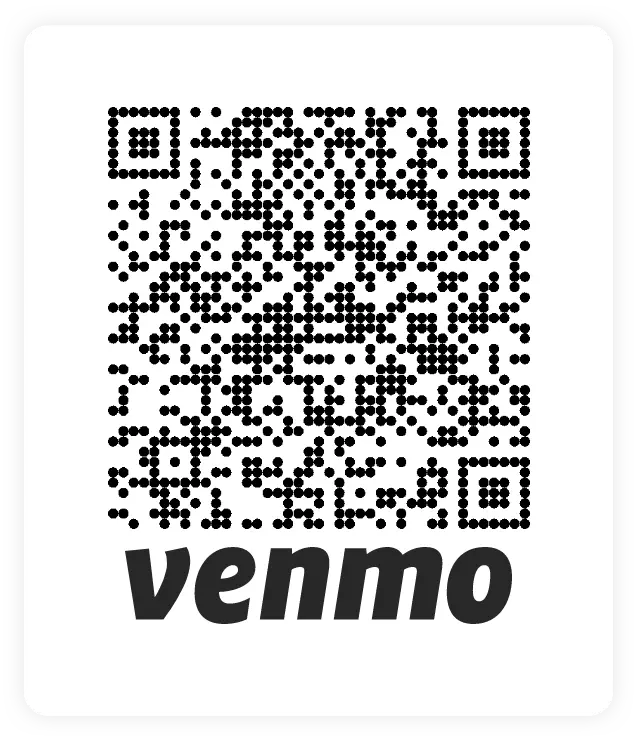

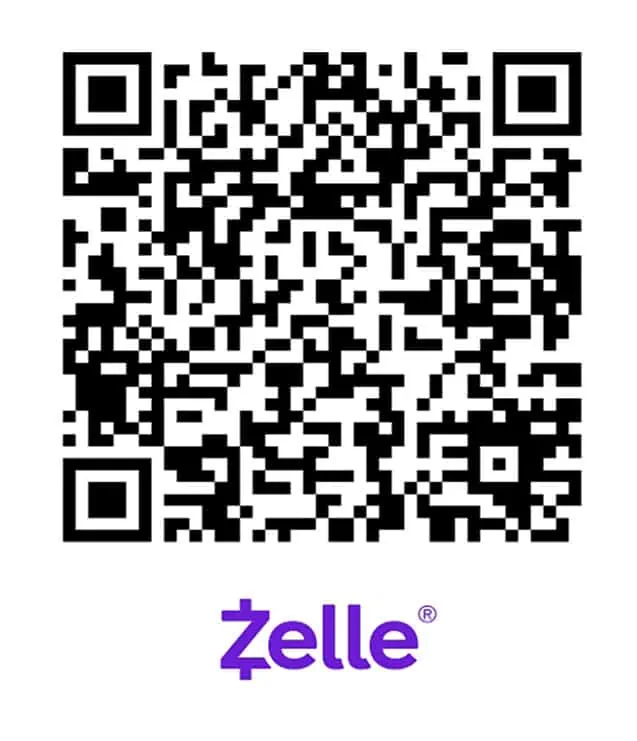
John Muir Trail Survey Collection
If you can think of anything that would make this resupply information more useful (or if you would like to see any more cross-referencing related to resupply), please comment and let me know.
For more on JMT Resupply, check out these posts.
Affiliate Disclosure: This page may contain affiliate links, which means I may receive small commissions for purchases made via these links at no additional cost to you. This helps pay the bills and keep the site up and running. Thank you for your support!
